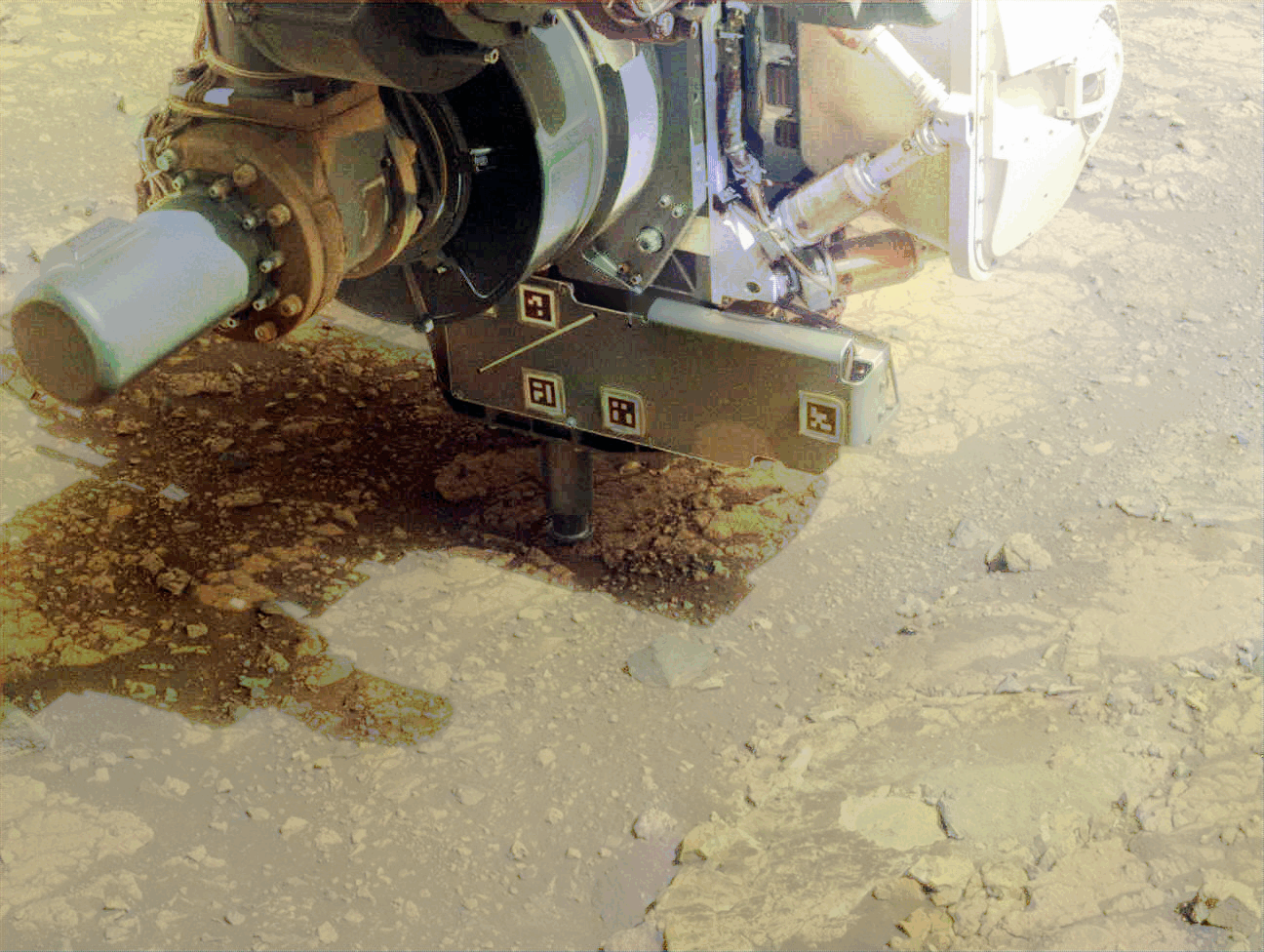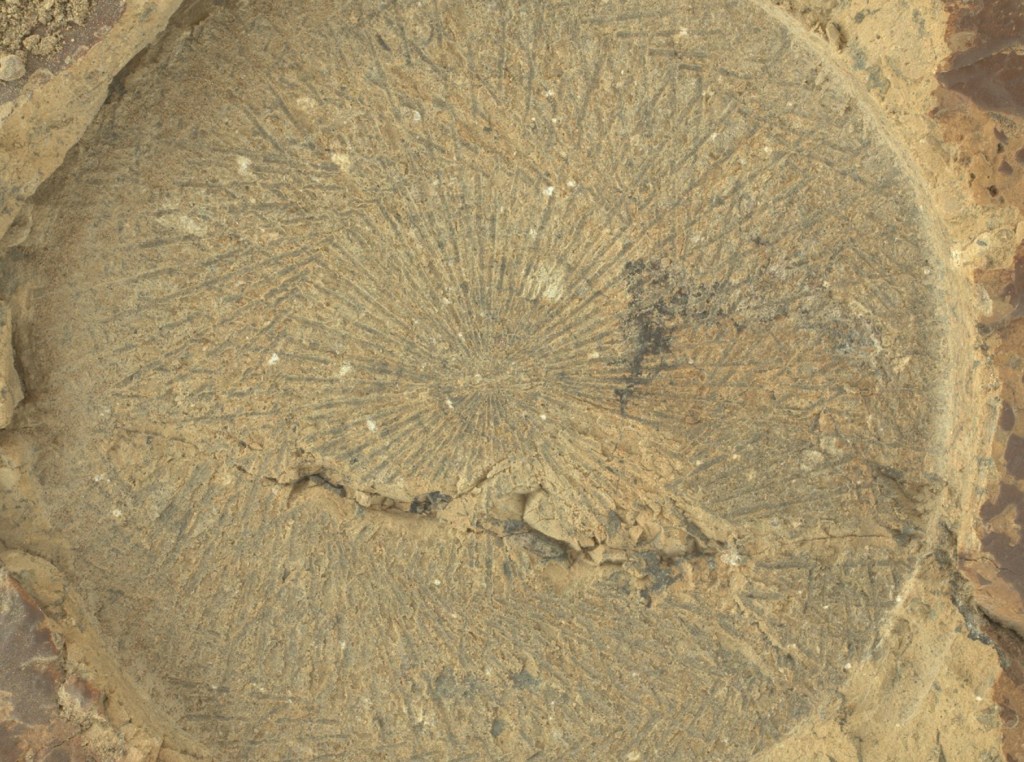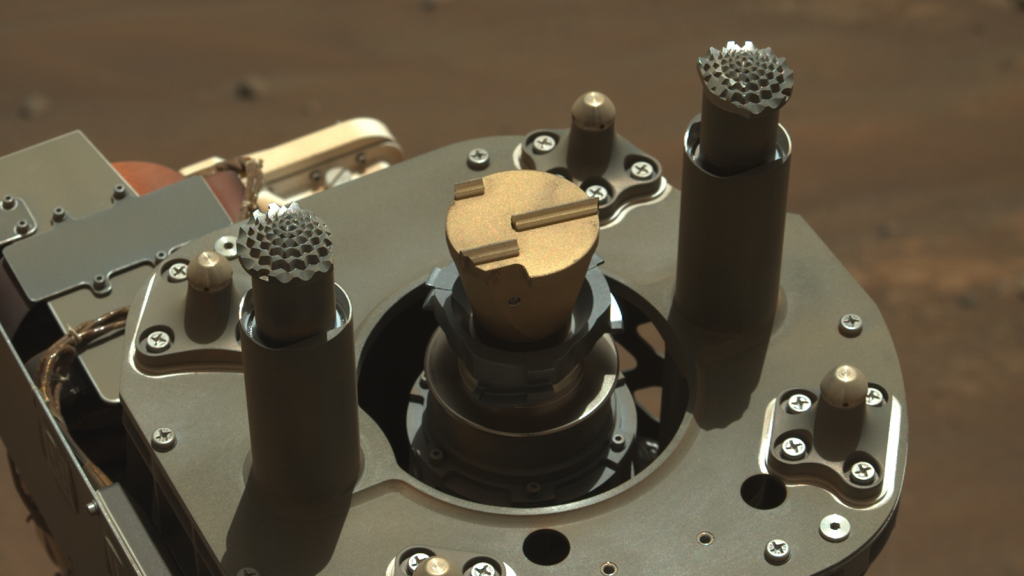6 min read
In addition to drilling rock core samples, the science team has been grinding its way into rocks to make sense of the scientific evidence hiding just below the surface.

On June 3, NASA's Perseverance Mars rover ground down a portion of a rock surface, blew away the resulting debris, and then went to work studying its pristine interior with a suite of instruments designed to determine its mineralogic makeup and geologic origin. "Kenmore," as nicknamed by the rover science team, is the 30th Martian rock that Perseverance has subjected to such in-depth scrutiny, beginning with drilling a two-inch-wide (5-centimeter-wide) abrasion patch.
"Kenmore was a weird, uncooperative rock," said Perseverance's deputy project scientist, Ken Farley from Caltech in Pasadena, California. "Visually, it looked fine - the sort of rock we could get a good abrasion on and perhaps, if the science was right, perform a sample collection. But during abrasion, it vibrated all over the place and small chunks broke off. Fortunately, we managed to get just far enough below the surface to move forward with an analysis."
The science team wants to get below the weathered, dusty surface of Mars rocks to see important details about a rock's composition and history. Grinding away an abrasion patch also creates a flat surface that enables Perseverance's science instruments to get up close and personal with the rock.


Time to Grind
NASA's Mars Exploration Rovers, Spirit and Opportunity, each carried a diamond-dust-tipped grinder called the Rock Abrasion Tool (RAT) that spun at 3,000 revolutions per minute as the rover's robotic arm pushed it deeper into the rock. Two wire brushes then swept the resulting debris, or tailings, out of the way. The agency's Curiosity rover carries a Dust Removal Tool, whose wire bristles sweep dust from the rock's surface before the rover drills into the rock. Perseverance, meanwhile, relies on a purpose-built abrading bit, and it clears the tailings with a device that surpasses wire brushes: the gaseous Dust Removal Tool, or gDRT.
"We use Perseverance's gDRT to fire a 12-pounds-per-square-inch (about 83 kilopascals) puff of nitrogen at the tailings and dust that cover a freshly abraded rock," said Kyle Kaplan, a robotic engineer at NASA's Jet Propulsion Laboratory in Southern California. "Five puffs per abrasion - one to vent the tanks and four to clear the abrasion. And gDRT has a long way to go. Since landing at Jezero Crater over four years ago, we've puffed 169 times. There are roughly 800 puffs remaining in the tank." The gDRT offers a key advantage over a brushing approach: It avoids any terrestrial contaminants that might be on a brush from getting on the Martian rock being studied.
Having collected data on abraded surfaces more than 30 times, the rover team has in-situ science (studying something in its original place or position) collection pretty much down. After gDRT blows the tailings away, the rover's WATSON (Wide Angle Topographic Sensor for Operations and eNgineering) imager (which, like gDRT, is at the end of the rover's arm) swoops in for close-up photos. Then, from its vantage point high on the rover's mast, SuperCam fires thousands of individual pulses from its laser, each time using a spectrometer to determine the makeup of the plume of microscopic material liberated after every zap. SuperCam also employs a different spectrometer to analyze the visible and infrared light that bounces off the materials in the abraded area.
"SuperCam made observations in the abrasion patch and of the powdered tailings next to the patch," said SuperCam team member and "Crater Rim" campaign science lead, Cathy Quantin-Nataf of the University of Lyon in France. "The tailings showed us that this rock contains clay minerals, which contain water as hydroxide molecules bound with iron and magnesium - relatively typical of ancient Mars clay minerals. The abrasion spectra gave us the chemical composition of the rock, showing enhancements in iron and magnesium."
Later, the SHERLOC (Scanning Habitable Environments with Raman & Luminescence for Organics & Chemicals) and PIXL (Planetary Instrument for X-ray Lithochemistry) instruments took a crack at Kenmore, too. Along with supporting SuperCam's discoveries that the rock contained clay, they detected feldspar (the mineral that makes much of the Moon brilliantly bright in sunlight). The PIXL instrument also detected a manganese hydroxide mineral in the abrasion - the first time this type of material has been identified during the mission.
With Kenmore data collection complete, the rover headed off to new territories to explore rocks - both cooperative and uncooperative - along the rim of Jezero Crater.
"One thing you learn early working on Mars rover missions is that not all Mars rocks are created equal," said Farley. "The data we obtain now from rocks like Kenmore will help future missions so they don't have to think about weird, uncooperative rocks. Instead, they'll have a much better idea whether you can easily drive over it, sample it, separate the hydrogen and oxygen contained inside for fuel, or if it would be suitable to use as construction material for a habitat."
Long-Haul Roving
On June 19 (the 1,540th Martian day, or sol, of the mission), Perseverance bested its previous record for distance traveled in a single autonomous drive, trekking 1,348 feet (411 meters). That's about 210 feet (64 meters) more than its previous record, set on April 3, 2023 (Sol 753). While planners map out the rover's general routes, Perseverance can cut down driving time between areas of scientific interest by using its self-driving system, AutoNav.






